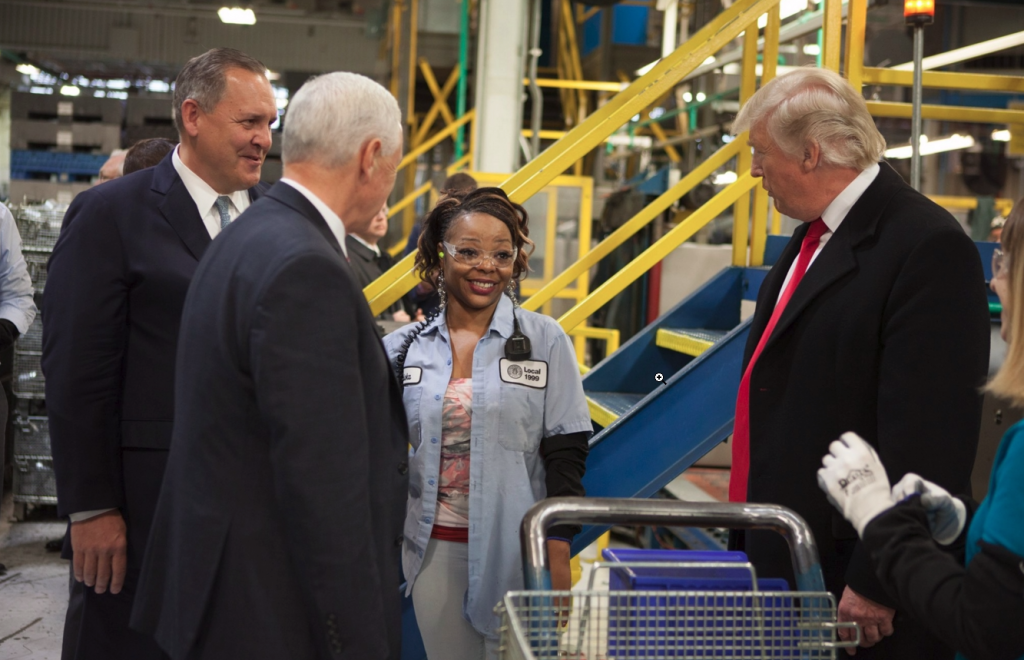
Trump rode into office pledging to shake things up for the working class. How’s that going?
President Trump marks his 100th day in office on Saturday Jan. 29. He's celebrating by holding a campaign-style rally in Pennsylvania, and there are even rumors he will tour a factory during his trip.
Trump is using the big speech as a way to tout what he undoubtedly sees as a successful first 100 days in office (and also not-so-subtly jab the media, as the White House Correspondents Dinner will be taking place in Washington, D.C. at the same time). But how have those 100 days shaped up? Is Trump keeping his promises to blue-collar workers — and are they starting to see any results?
Alliance for American Manufacturing President Scott Paul analyzed Trump's first four months in office in a post for Medium. Be sure to read the entire piece, but here's one highlight:
In these first 100 days, several large corporations have made a big fuss about creating or retaining American jobs. But the evidence that they did this because of Trump is murky. While a handful of the announcements are new, many companies had these plans on the books before Trump’s election and saw a public relations opportunity to make nice with the new administration.
Now, some companies are indeed looking at expanding U.S. operations and/or sourcing more of their materials from the United States because of potential Trump policy changes. Others are reconsidering plans to send jobs abroad. But many are still in a wait-and-see mode, as there’s still no evidence Washington is functional again.
Trump’s economic development efforts via Twitter have also slowed. While Trump said he’d be willing to call every company looking at shipping jobs overseas, that follow-through hasn’t materialized.
But it's worth noting that Trump has launched several policy-minded efforts designed to tackle trade issues. It's a good start, but most of these initiatives will require significant follow-through. Here's more from Scott Paul:
Trump quickly made good on his campaign promise to pull out of the dead-on-arrival Trans-Pacific Partnership (TPP) trade deal. He’s also launched various initiatives that could bear some fruit, including executive orders tostrengthen Buy America preferences and reduce the trade deficit. But most of that work is now in the planning stages; the real test will come this summer when more concrete action plans are unveiled.
On Trump’s order, the Commerce Department is investigating whether steeland aluminum imports are threatening America’s national security. If Commerce determines these imports are indeed a threat, and Trump opts to act accordingly, it would be a major win in the effort to combat unfair trade, particularly with China.
